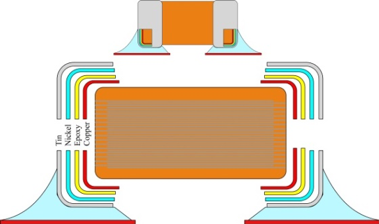From the Publisher: The Return to Regionalization

By Eric Miscoll, EMSNOW Publisher

The electronics manufacturing industry has spread and migrated around the globe for the past three decades in search of lower cost labor and in the hopes of penetrating new markets. In retrospect, this two-pronged OEM objective – lower labor costs and new markets – has not been as successful as was hoped. Labor rates increased faster than expected as workers demanded to earn enough to afford the products they were making. Markets were not as open as expected as domestic companies quickly began to compete with products that had been reverse engineered. As business and economic realities changed in different areas the migration continued, with managers hoping for a different outcome in another country. Remember when Singapore was a low-cost region? Not anymore.
At some point around 10 years ago, outsourcing managers began to rethink the strategy. The definitive trend in the industry now is regionalization. And in advanced economies, that means a combination of moving to the low-cost area in that region and/or Industry 4.0.
This trend has been referred to by many confusing terms over the last few years: on-shoring, localization, re-shoring, right-shoring, right-sourcing, near-shoring, repatriation, next-shoring, etc.. Most all of these have a political undertone to them that reflects a hope that volume manufacturing will return to advanced economies, but this misses the point. When President Trump declared that Apple should make iPhones in the U.S. and negotiated the deal with Foxconn to build a manufacturing campus in Wisconsin, the ultimate goal from Terry Gou’s perspective likely wasn’t to replicate what happened in China at the beginning of the globalization of electronics manufacturing, where tens of thousands of rural Chinese migrated to the cities to make Apple products for $1/hour. That model is dead, even in China. No, the Wisconsin campus likely will employ as few people as possible; but of course politicians can’t say that out loud.
Regionalization is the business strategy of building in region for region. This considers not just labor rates, but all associated total costs of outsourcing (e.g., logistics, overhead, etc.). A simple analogy is growing hay to feed a herd of cows. Where is the most cost-effective place to grow that hay? Across the street from the cows, or in the next county? Clearly proximity is an advantage. Advances in automation, initiatives like Industry 4.0, and recent geopolitical tariff wars have now called regionalization back into the spotlight, with a renewed imperative.
This strategy requires an entirely new costing model for electronics manufacturing, not based on labor cost alone. It also requires cooperation from the entire supply chain, including component suppliers for the BOM. The tariff war with China has brought all this into sharp focus, but it was a trend that has been emerging for years.
The benefits of this trend should be realized in all major regions across the planet. A core feature of regionalization is the fact that each global region (e.g., Americas, Asia, Europe) includes both high and low-cost areas. In the Americas, the low-cost region is Mexico. In Europe, it is the non-Euro countries of Eastern Europe. In Asia, Vietnam is starting to gain traction.
New business models are developing that seek to utilize advances in automation and improved machine communication software to provide manufacturing services in what used to be considered high-cost regions. Component suppliers are responding as well. Time will tell how all this works out. In the short term, this will help address the tariff situation; in the long term, it could lead to a more balanced, cost effective and sustainable global electronics manufacturing supply chain.
What was old is clearly new again!













